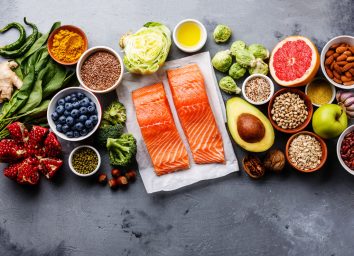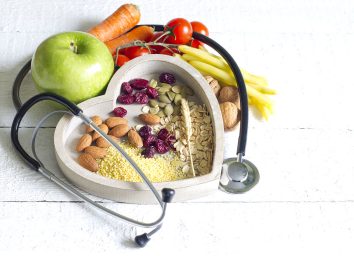Foods That Help Stave Off Strokes After 40
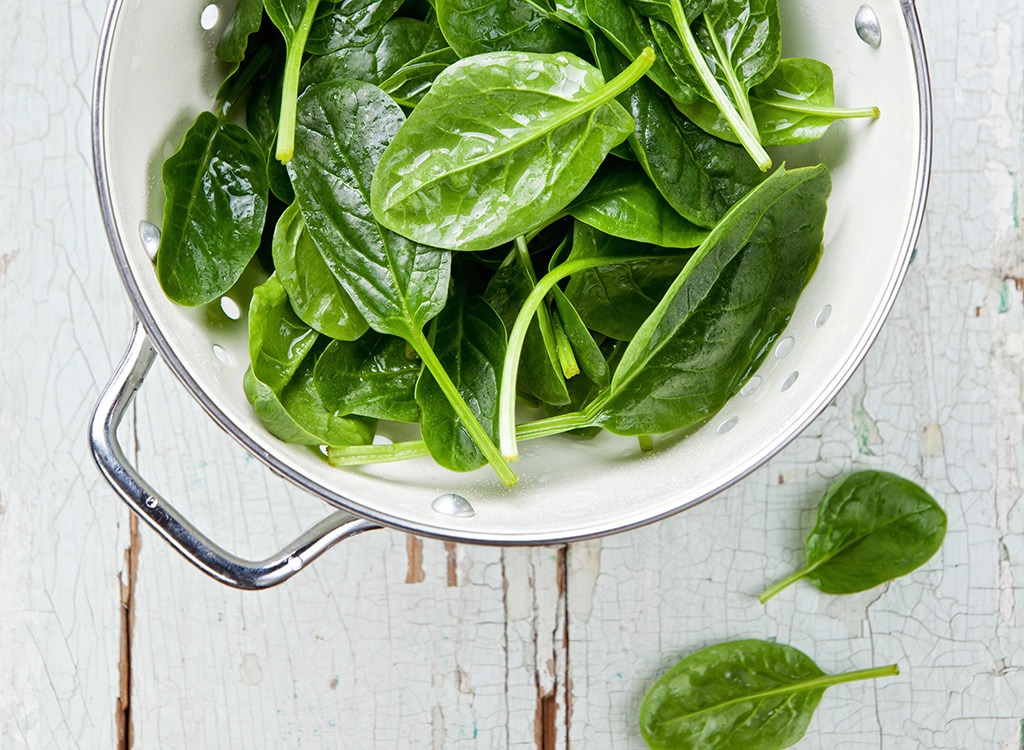
According to the American Heart Association's 2018 Heart Disease and Stroke Statistics Update, someone in the U.S. has a stroke about once every 40 seconds, and a stroke accounts for 1 of every 19 deaths in the U.S. And globally, strokes rank as the second leading cause of death (behind heart disease). Though a stroke can happen at any age, your risk does increase as you get older.
These are sobering statistics, but thankfully, there are a wealth of foods out there that can help you stave off a stroke as you age. Have you ever heard of the famous Hippocrates quote, "Let food be thy medicine, and medicine be thy food?" It's time we start following that advice and eating more foods that help fight against heart attacks and strokes as best we can. However, it's important to identify that food alone cannot prevent stroke, but you can absolutely decrease your chances of having one by making positive changes to your diet.
"No one food can prevent stroke, but people with poor eating patterns are more prone to developing a multitude of chronic diseases, such as hypertension, type 2 diabetes, [and] high cholesterol, which can increase the risk for having a stroke," explains Erin Holley, registered dietitian at The Ohio State University Wexner Medical Center. "Uncontrolled high blood pressure is a risk factor for strokes, and a diet rich in fruits and vegetables can help with weight and blood pressure management."
To help you get started, here are four particular minerals, antioxidants, and fatty acids that help to lower blood pressure and ward off inflammation—two key factors that help to lower your chances of having a stroke—plus the foods you should eat that are rich in them. Try integrating these 16 foods into your daily diet to help prevent a stroke as you age.
Potassium
You may remember potassium as the mineral or electrolyte that fends off muscle cramps, but it can do a lot more, too. Perhaps you have experienced an excruciatingly uncomfortable Charley horse, a muscle spasm that occurs most often in the legs, and were then instructed to eat more bananas as a result. Well, as it turns out, this all-important mineral is also responsible for regulating blood pressure, says Lori Chong, registered dietitian at The Ohio State University Wexner Medical Center.
"High blood pressure increases the risk of stroke," she tells us. And one study found that consuming a higher intake of potassium was linked to a 24 percent risk reduction of stroke.
There are several foods that have notable amounts of potassium, so you don't just have to rely on one fruit to get your proper serving. Here are four foods that pack more potassium than one banana. The milligrams of potassium for each food were retrieved from the United States Department of Agriculture Food Composition Databases unless noted otherwise.
Dried Apricots
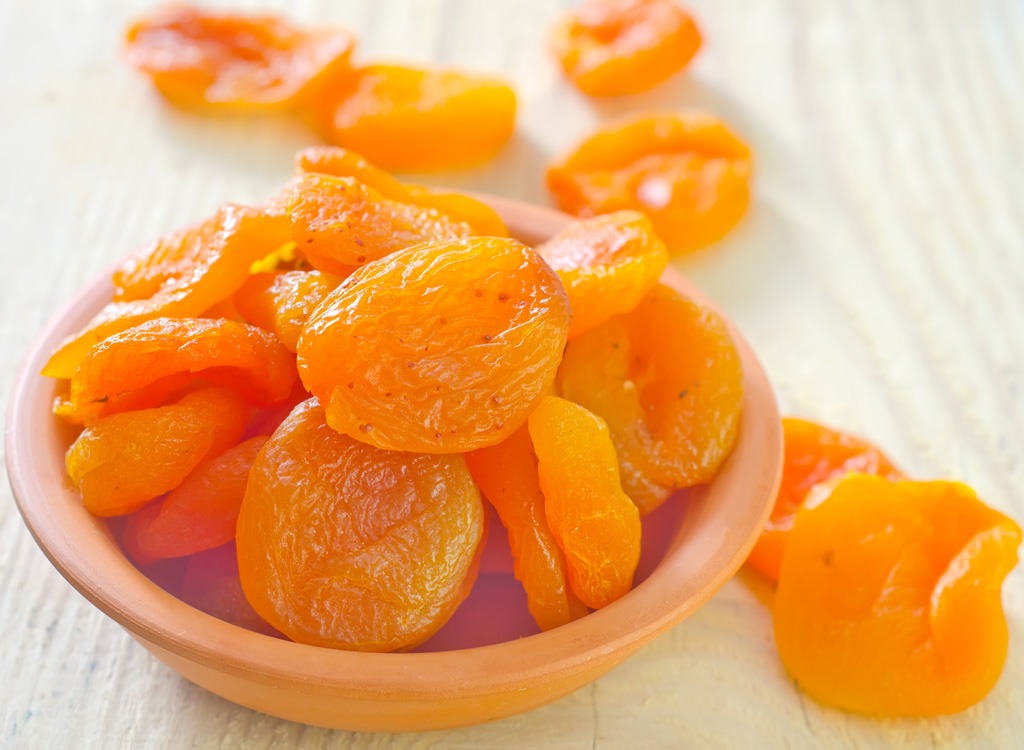
The typical adult needs about 4,700 milligrams of potassium each day—the amount that's considered adequate enough to meet nutritional standards. According to the American Heart Association, low potassium levels are attributable to high blood pressure or hypertension, which can lead to heart attack or stroke if not managed. Just one cup of dried apricots houses 1,511 milligrams of potassium, which is equivalent to 32 percent of your daily needs. For reference, a medium-sized banana contains 422 milligrams of potassium, or about 9 percent of your daily needs.
Avocados
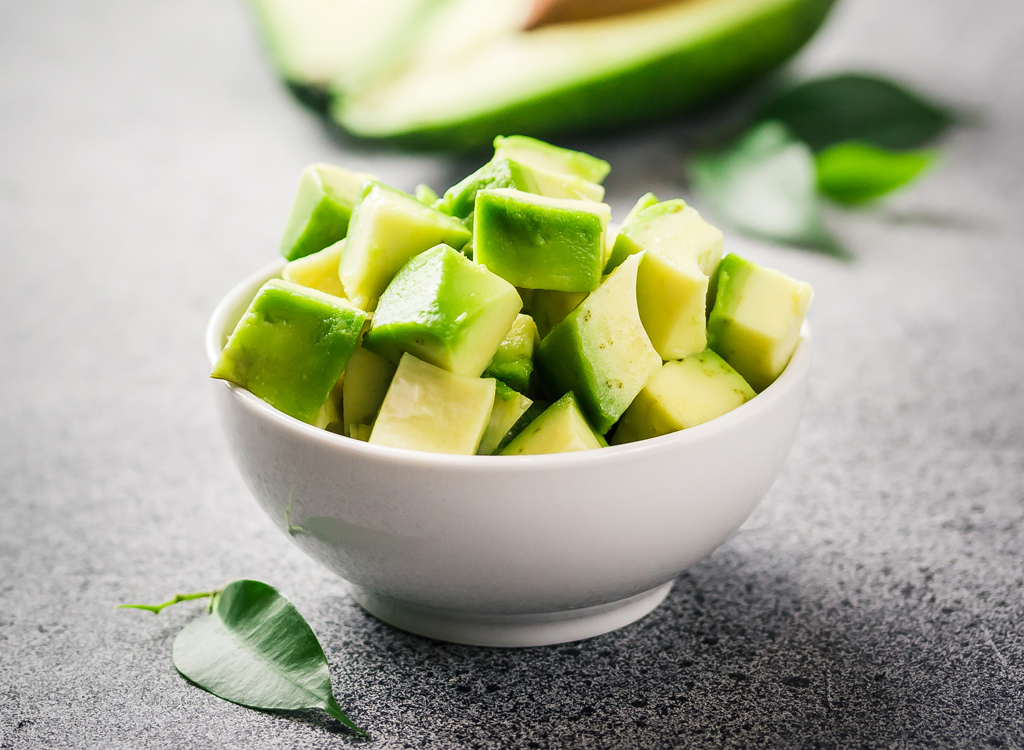
Integrating more guacamole into your diet may just help you decrease the chances of experiencing a stroke. That is, as long as you take it easy on the salt, as a high intake of sodium is a key cause of high blood pressure, which can cause a stroke. One cup of pureed avocado comprises about 1,116 milligrams of potassium, which translates to roughly 24 percent of your daily needs. Not to mention, avocados are loaded in heart-healthy fatty acids that have been shown to decrease inflammation.
Holley says avocados are high in monounsaturated fats, the type of fat that promotes the good kind of cholesterol HDL, rather than the artery-clogging one known as LDL. "Keeping your cholesterol levels at desirable levels is recommended to decrease your risk for heart disease. Avocados are also a high fiber containing fruit, providing 3 grams of fiber per 50 grams serving," she says.
Swiss Chard
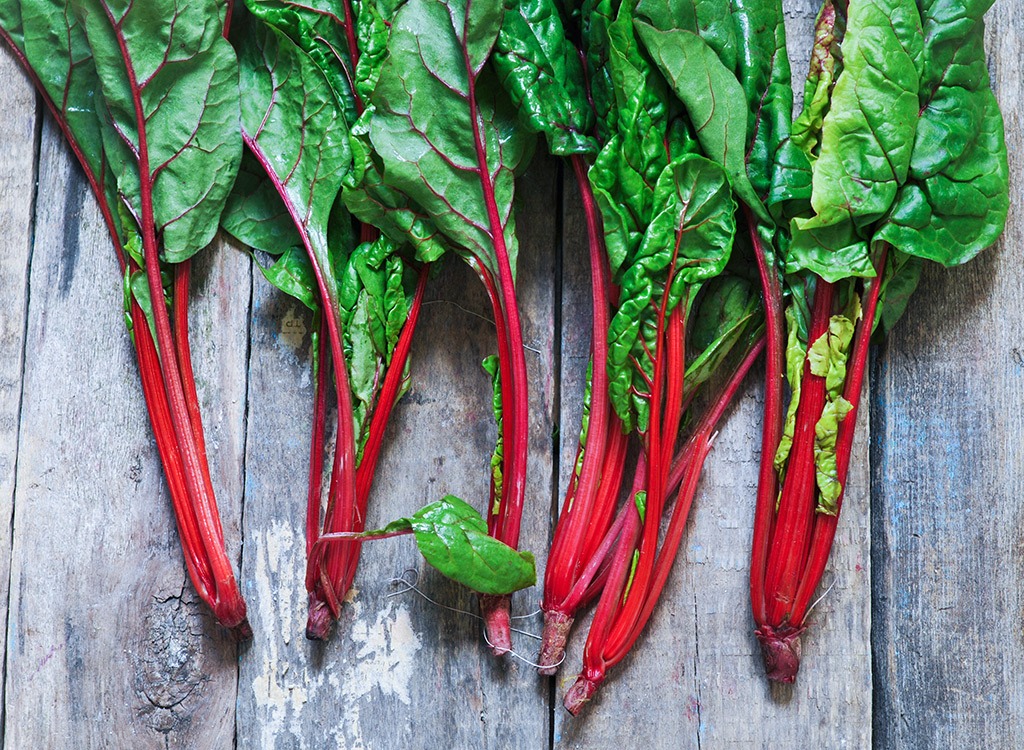
Boiling this leafy green can help you get a good amount of potassium in just one sitting. One cup of boiled Swiss chard lends 20 percent of your daily needs of the mineral.
"Swiss Chard is rich in potassium and magnesium, and these are nutrients that can help maintain a healthy blood pressure," explains Holley. "While some people find the taste of this green to be a little bitter, a squeeze of lemon juice can help brighten up the flavor."
Even more impressive is Swiss chard's vitamin K content. One cup of the boiled leafy green amounts to 635 percent of a woman's daily adequate intake (AI) of the vitamin and about 477 percent of a man's AI. Vitamin K is essential for promoting both bone and cognitive health, and may even play a role in fending off cardiovascular disease in certain populations of people.
Potatoes
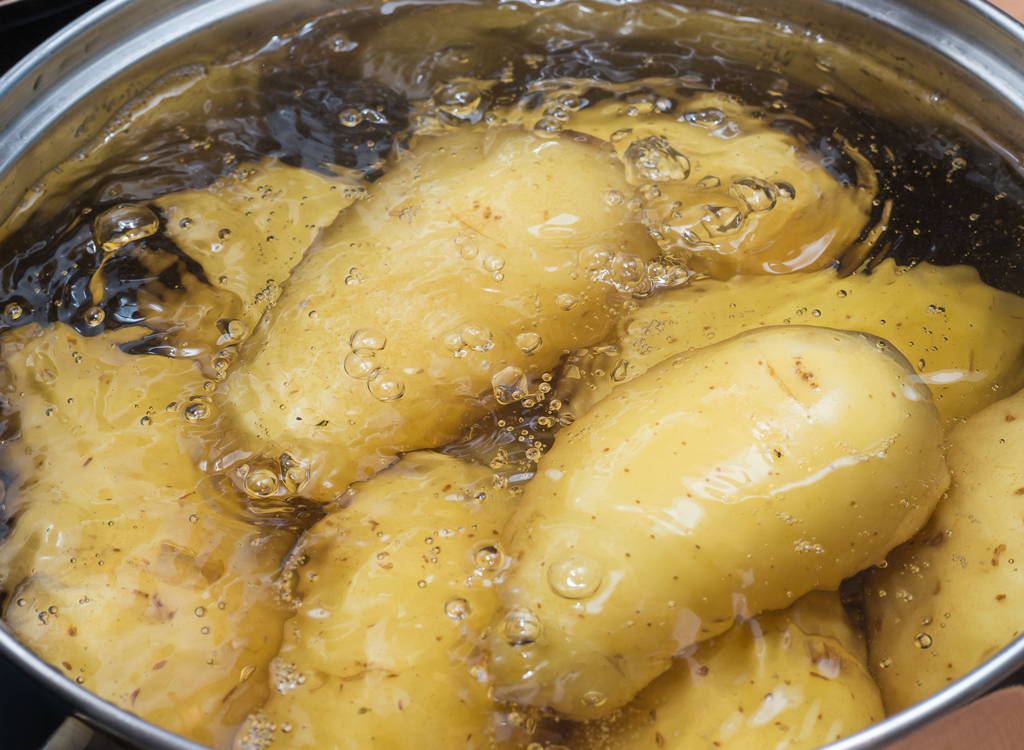
One medium-sized potato with the skin still intact contains just under 20 percent of your daily needs of potassium. This is more than double the amount a medium-sized banana provides! Let's say you were really hungry and ate a large potato instead. That would get you one-third of your daily needs of the mineral. Add more potatoes into your weekly meal prep to maintain healthy potassium levels to steer clear of high blood pressure and, ultimately, a stroke.
Magnesium
Magnesium is a trace mineral that's important for myriad reasons, including keeping bones strong, facilitating nerve impulses, and even preventing stroke. In fact, according to a handful of studies, the conclusion was made that higher magnesium intake is associated with a reduced risk of stroke. Even more, Chong adds that magnesium is also "helpful for regulating muscle contraction and keeping a regular heart rhythm." Here are four such foods that are chock-full of magnesium. The milligrams of magnesium for each food were retrieved from the United States Department of Agriculture Food Composition Databases unless noted otherwise.
Cashews
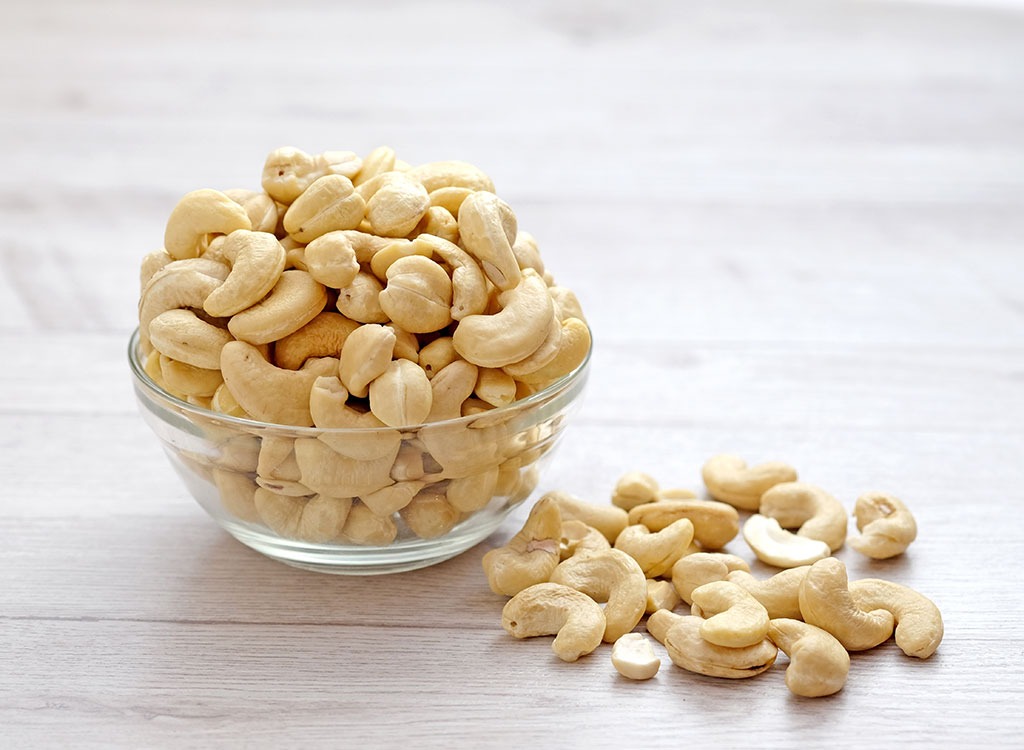
Only one ounce of these nuts contains about 74 milligrams, which is 23 percent of a woman's recommended dietary allowance of magnesium and about 18 percent for men. Cashews happen to be one of the top sources for magnesium, according to the National Institutes of Health. Luckily, cashews can truly enhance a recipe (we like them in a maple-cashew apple toast recipe). Whether it be something savory like a stir-fry of vegetables and rice or as a garnish to something sweet like a yogurt parfait, it's not hard to implement this food into your daily meals.
Spinach

We all know that spinach is a healthy vegetable. In fact, when eaten in tandem with dairy, the body is able to absorb a specific heart-healthy antioxidant found in spinach, which has been known to lessen inflammation and prevent cardiovascular disease if eaten over time. "This nutrient-rich vegetable is packed with carotenoids, vitamin K, folate, calcium, and iron," says Holley. "Spinach also has a high amount of fiber—2.4 grams per 100 gram serving—which is known to lower your risk for heart disease and stroke."
Aside from this antioxidant and the other handful of vitamins and minerals spinach contains, the leafy green is also full of magnesium. One cup of boiled spinach contains 157 milligrams, which is nearly 50 percent of the recommended dietary allowance of magnesium for women and 37 percent for men.
Pumpkin Seeds
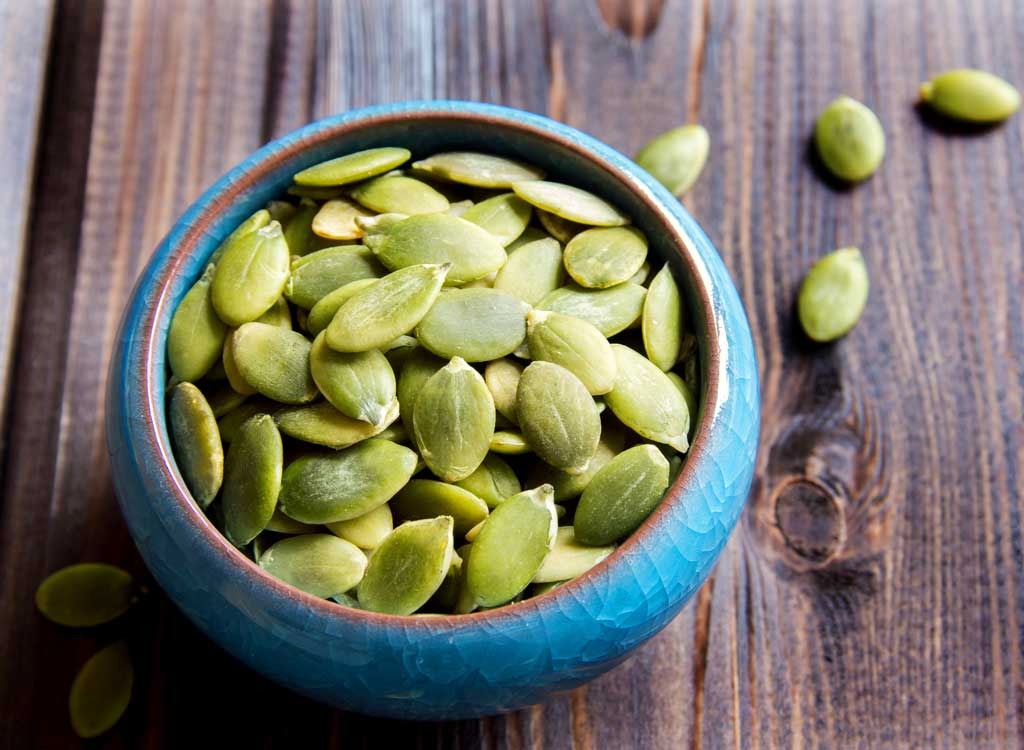
Pumpkin seeds are another food that's full of magnesium. Just one ounce of these dried seeds gives you 168 milligrams worth of the mineral, satisfying about 53 percent of the daily need for women and roughly 40 percent for men. But that's not the only notable nutrient it packs.
"These small little seeds are chock-full of nutrition, such as protein, magnesium, potassium, and polyunsaturated fats. They naturally contain antioxidants, which can help to reduce inflammation and therefore reduce risk of stroke, heart disease, [and] cancer," says Holley. "They're also an excellent source of fiber, which can help to balance blood sugar and reduce complications of diabetes, along with promoting gut health."
Dark Chocolate
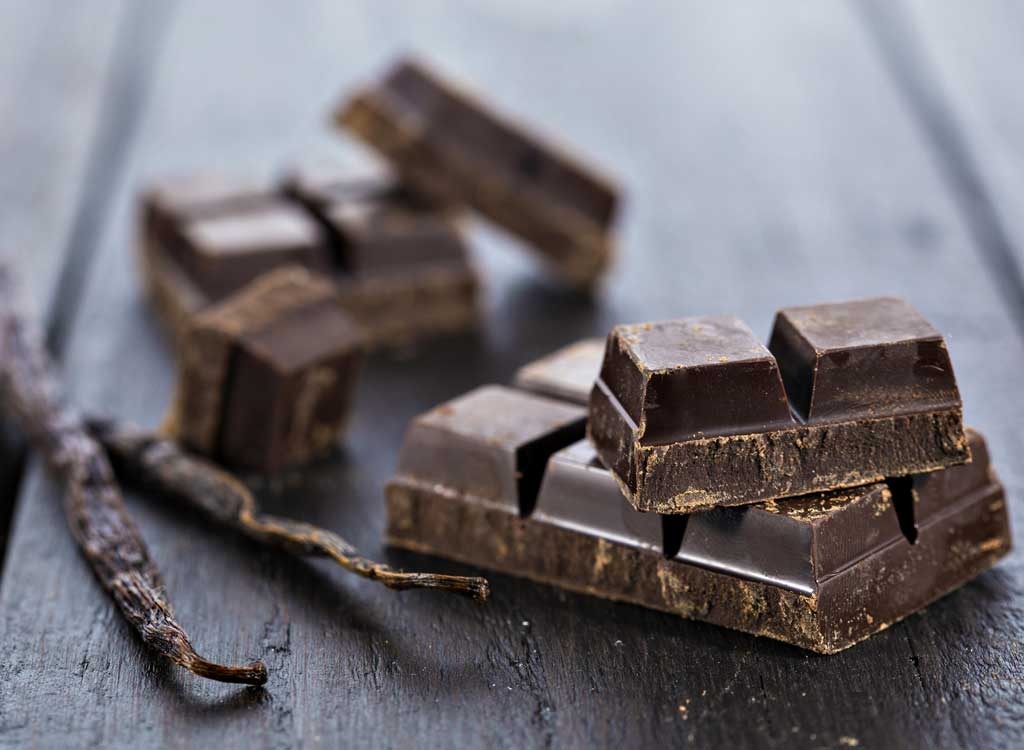
What if we told you that consuming up to six servings of dark chocolate a week could lessen your chances of developing coronary heart disease, diabetes, and having a stroke? According to a study in Nutrients, it's very possible. Perhaps dark chocolate's high magnesium content is to thank—per one ounce, dark chocolate (the 70-85 percent cacao solids kind) provides 20 percent of the recommended dietary allowance for women and 15 percent for men.
"Dark chocolate contains higher levels of antioxidants, fiber, iron, magnesium, and other trace minerals," adds Holley. "Phytochemicals in dark chocolate can help to open blood vessels and reduce blood pressure. Remember that dark chocolate can still contain added sugars, so be mindful with portion sizes." When eaten in small amounts, dark chocolate can quite actually be a life-saver.
Lycopene
"Lycopene is a phytonutrient in the carotenoid family. It, as well as the other carotenoids, have strong antioxidant, anti-inflammatory benefits," says Chong. You can generally tell when a fruit or vegetable has a good source of lycopene in it by its color—lycopene is what gives these foods their statement pink or red pigment. This antioxidant has been shown to reduce the chances of experiencing a stroke. An analysis published in Neurology found that men between the ages of 46 and 65 and with the highest lycopene concentrations were between 55 and 59 percent less likely to endure a stroke.
Sun-dried Tomatoes
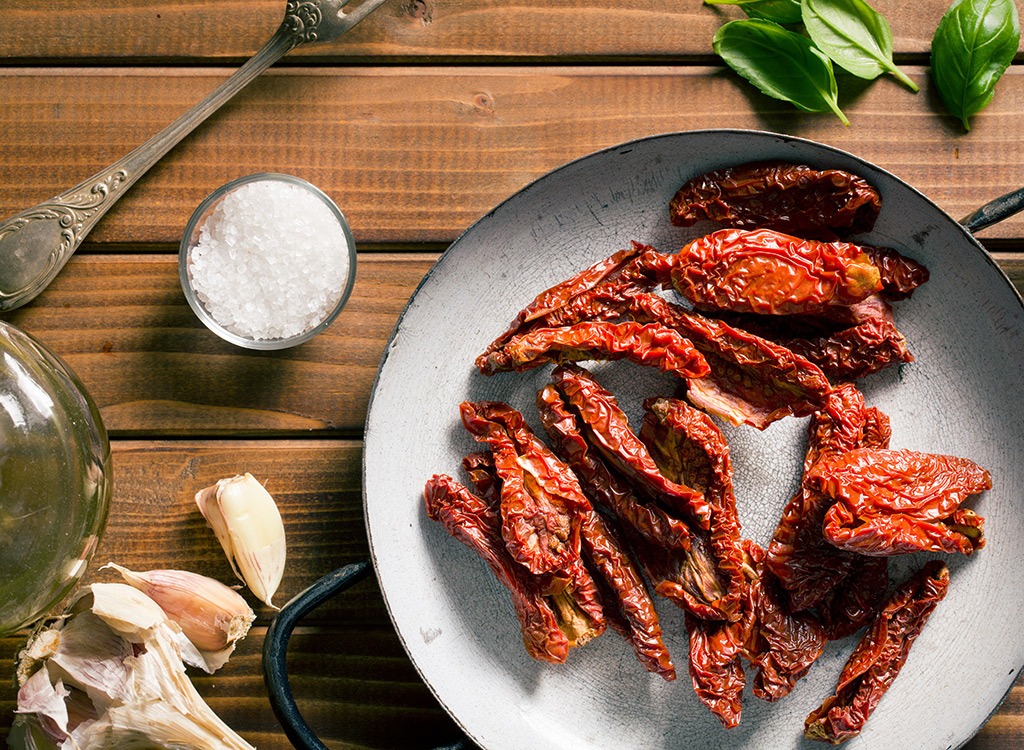
Just under one cup of savory sun-dried tomatoes contains about 45.9 milligrams of the antioxidant, and while there isn't a recommended dietary allowance yet established for lycopene, know that any dish with tomatoes in it has a good source of the antioxidant. According to a study, consuming between 9 and 21 milligrams per day was enough to decrease a male's chances of getting prostate cancer. There's a reason why sun-dried tomatoes are so chockfull of antioxidants and other nutrients.
"Sun-dried tomatoes are ripe tomatoes that have lost the majority of their water content after drying time in the sun—this concentrates their flavor and nutrients," says Holley. "If using sun-dried tomatoes that are packed in oil, keep in mind these can be higher in calories than fresh vegetables."
Guava
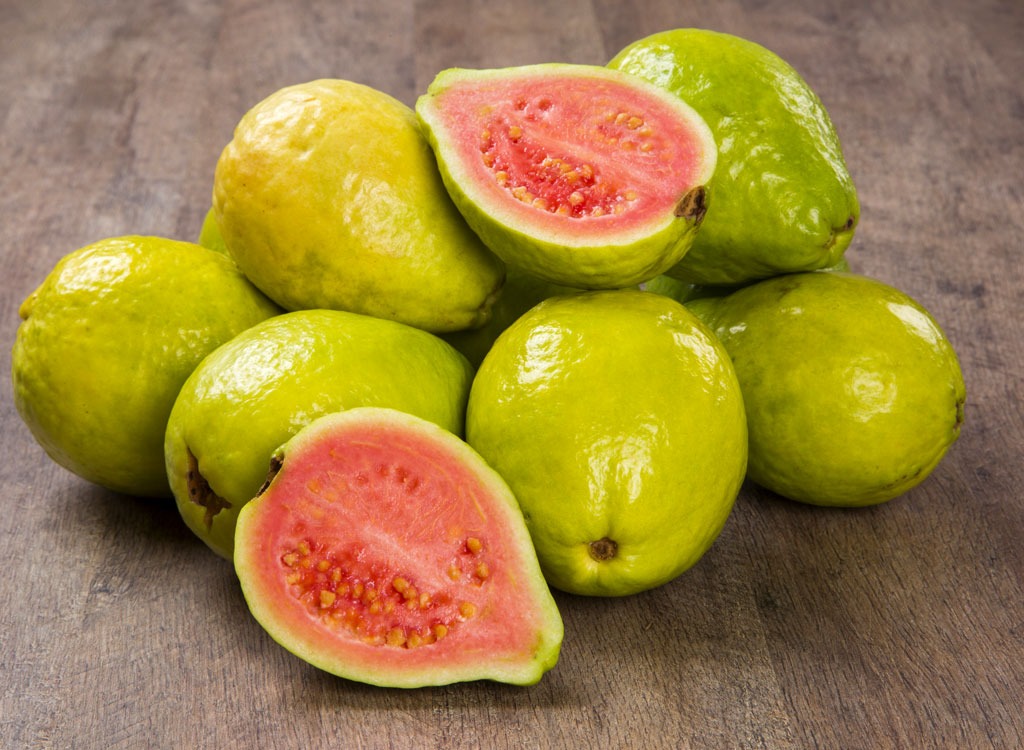
About 100 grams of this tropical fruit contains 5.2 milligrams of lycopene. It adds a vibrant hue to a fruit-topped salad, so consider adding it to your office lunch!
Watermelon
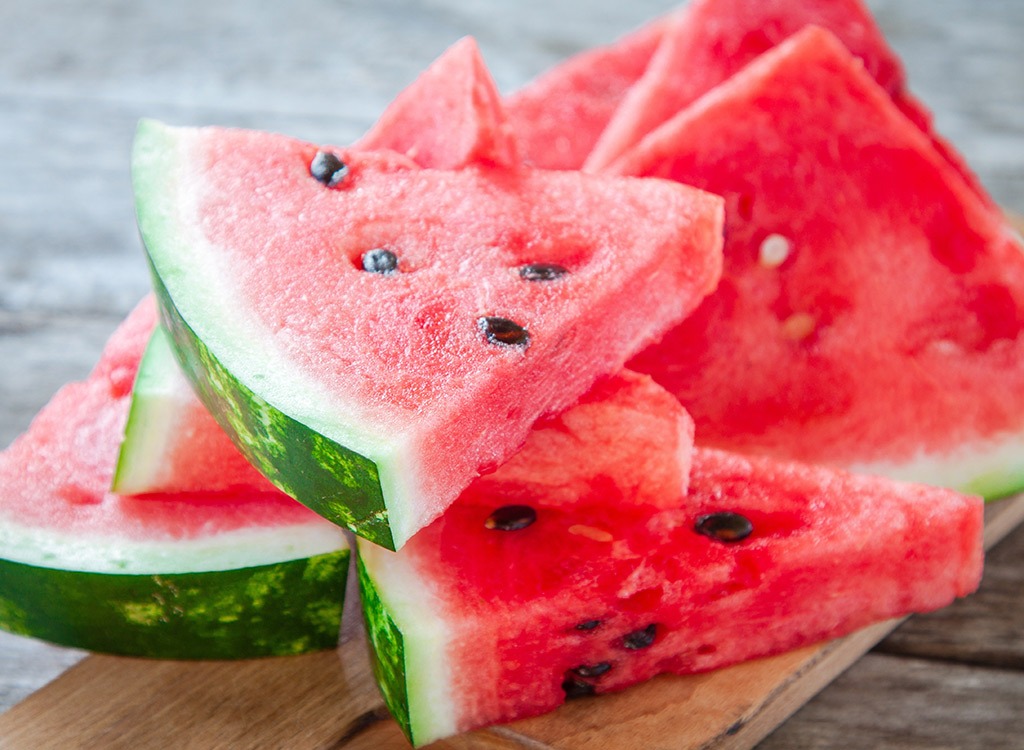
Watermelon is another lycopene-filled fruit. (Couldn't you guess by its pigment?) According to a study in the American Journal of Hypertension, those who had prehypertension and ate watermelon ended up reducing their blood pressure. As we stated earlier, high blood pressure is correlated with stroke.
Pink Grapefruit
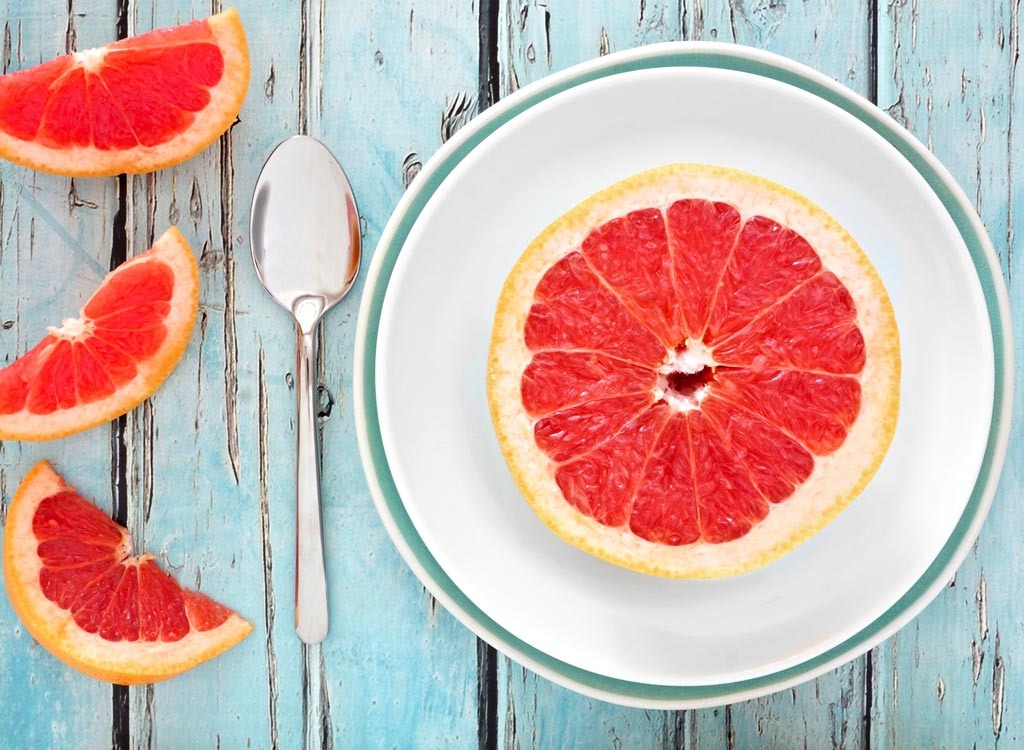
Grapefruit is also loaded in the antioxidant lycopene. Not a tart fan? Slice open one of these fruits and throw it under the broiler to caramelize it and help cut back on the bitter flavor.
Omega-3s
Omega-3 fatty acids help to keep your blood pressure and cholesterol levels in check, both of which are capable of causing a stroke if elevated for years on end. According to a study published in the American Journal of Preventive Medicine, eating fish that provides a good source of omega-3 fats once or twice a week may reduce the risk of stroke, as well as other cognitive complications, including depression and even Alzheimer's disease. Chong says the foods we have provided below are also good sources of selenium and zinc, all of which have antioxidant capabilities.
Salmon
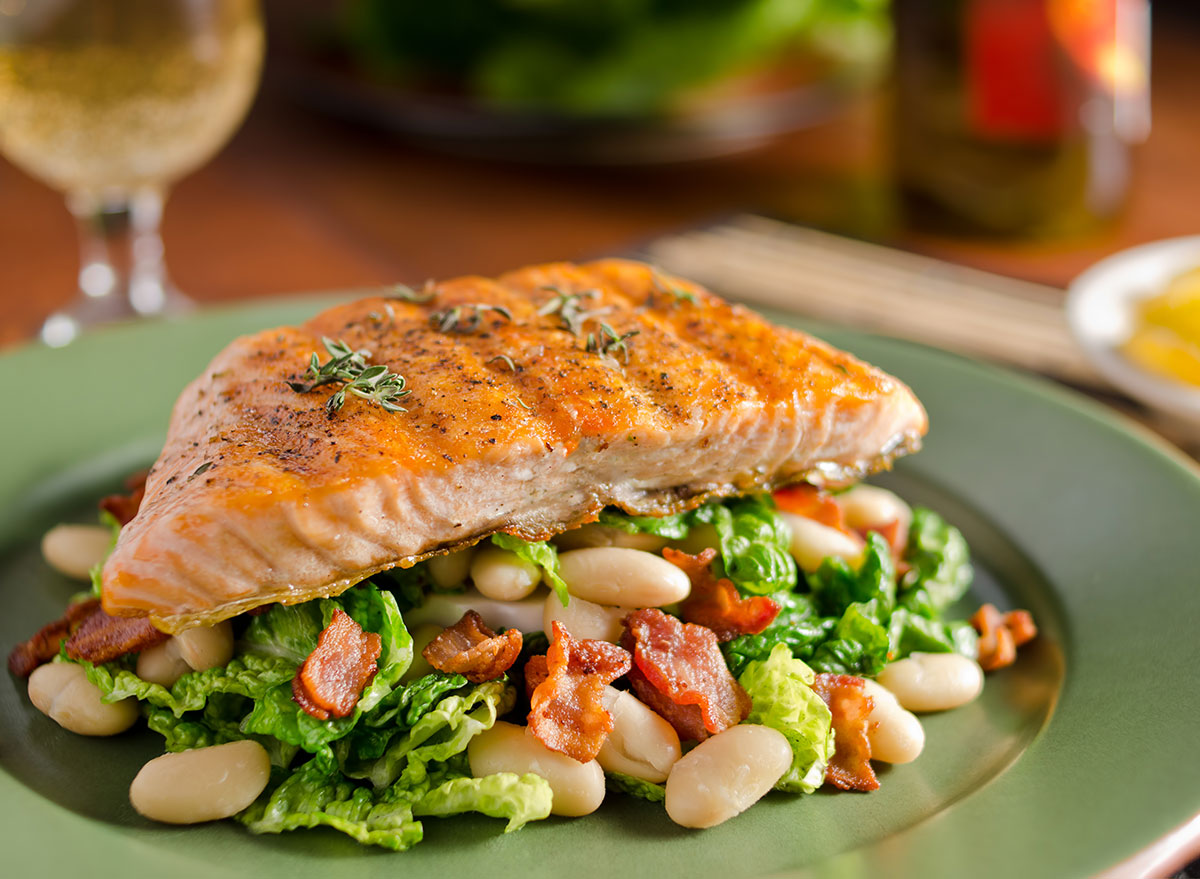
There is a lot of research behind salmon and its ability to prevent to the onset of both heart disease and heart disease-related incidents such as heart attack and stroke, and even cognitive diseases such as Alzheimer's disease and dementia. Omega-3 fatty acids are an anti-inflammatory agent that works to clear plaque in the brain and in the arteries, especially those near the heart, Holley confirms.
"Salmon is high in omega-3 fatty acids and is a known anti-inflammatory food and may protect the brain and nerves," she says. "Reducing inflammation can help to reduce blood pressure and cholesterol levels, and therefore reduce the risk of stroke. It is recommended that we consume 2-3 servings a week of fatty fish, such as salmon, to obtain healthy omega 3 fats in our diet. And research suggests that it's best to consume fish versus taking supplements."
Flaxseeds
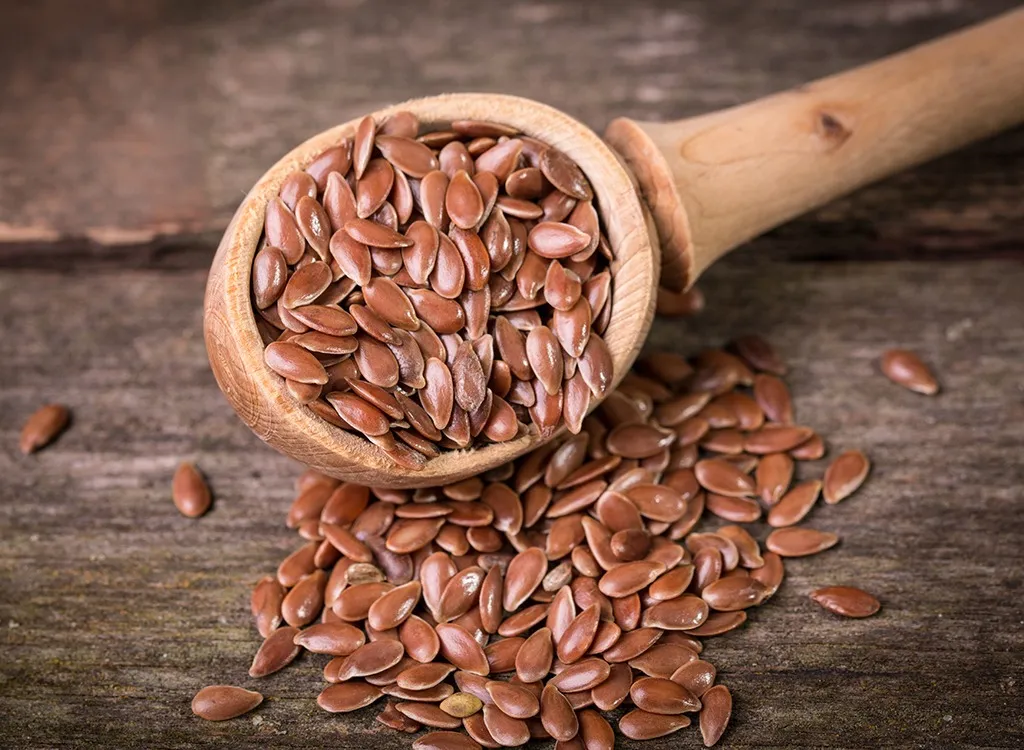
These seeds may be small, but that doesn't mean they aren't packed with heart-healthy vitamins and minerals. Flaxseeds are a good plant-based source of omega-3 fatty acids. According to a study, those who consumed omega-3 fatty acids for eight weeks had significantly lower blood pressure than those in the study who took the placebo.
Oysters
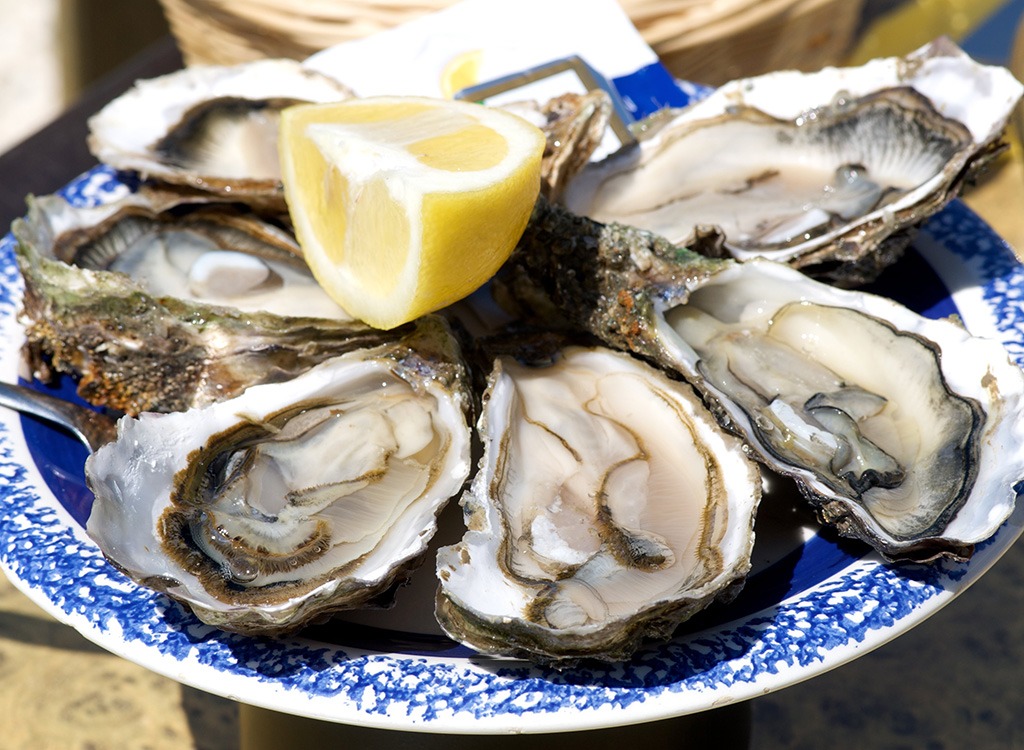
Not only are oysters a good source of omega-3 fatty acids, but they're also loaded in zinc. In fact, in just six medium-sized oysters, there are 77 milligrams of zinc, which is well past the recommended dietary allowance for men of 11 milligrams and for women at just 8 milligrams.
Walnuts
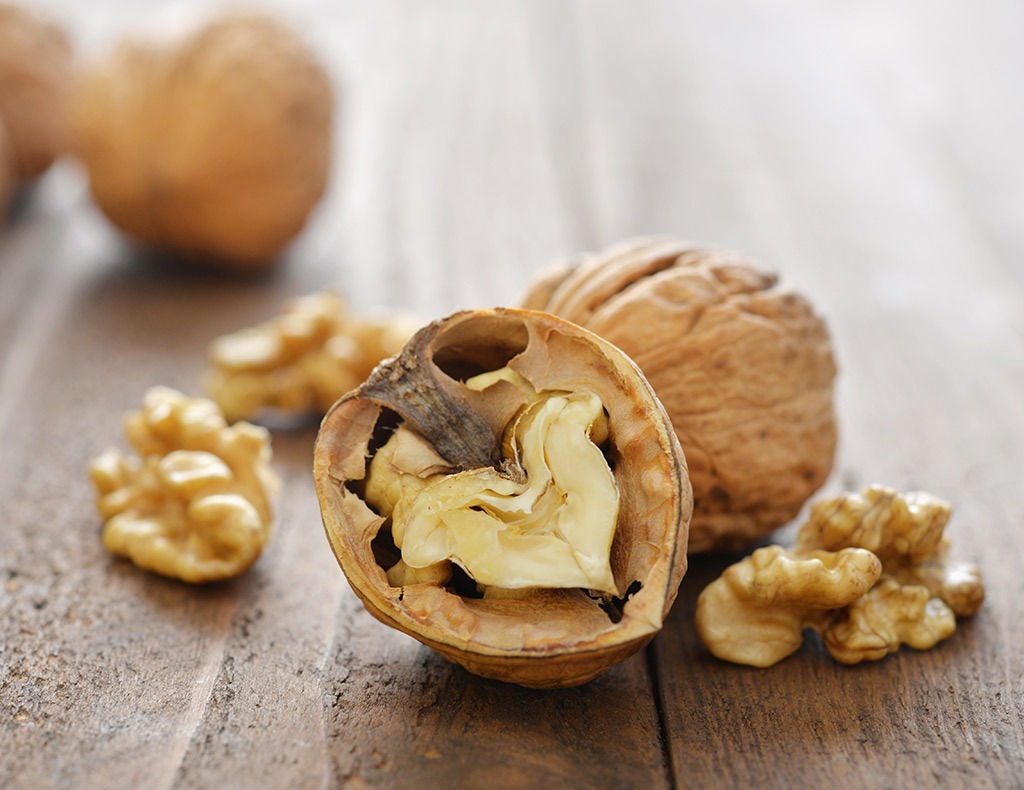
You can find a good source of omega-3 fats in just one ounce of walnuts (which is about seven nuts). "Over the years there have been several studies that have linked nut intake with lower blood pressure and cholesterol levels. Walnuts, in particular, contain polyunsaturated fats, including alpha-linoleic acid," says Holley. "This type of omega-3 fatty acid can help with inflammation." Sprinkle a handful atop your salad for a heart-healthy boost, or keep some in a reusable container for a midday snack!
